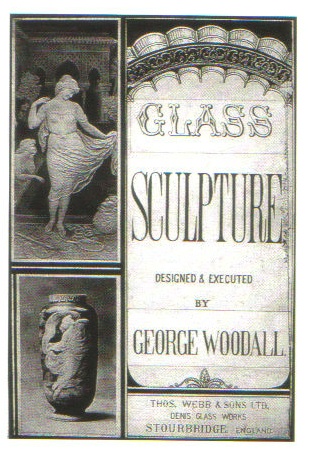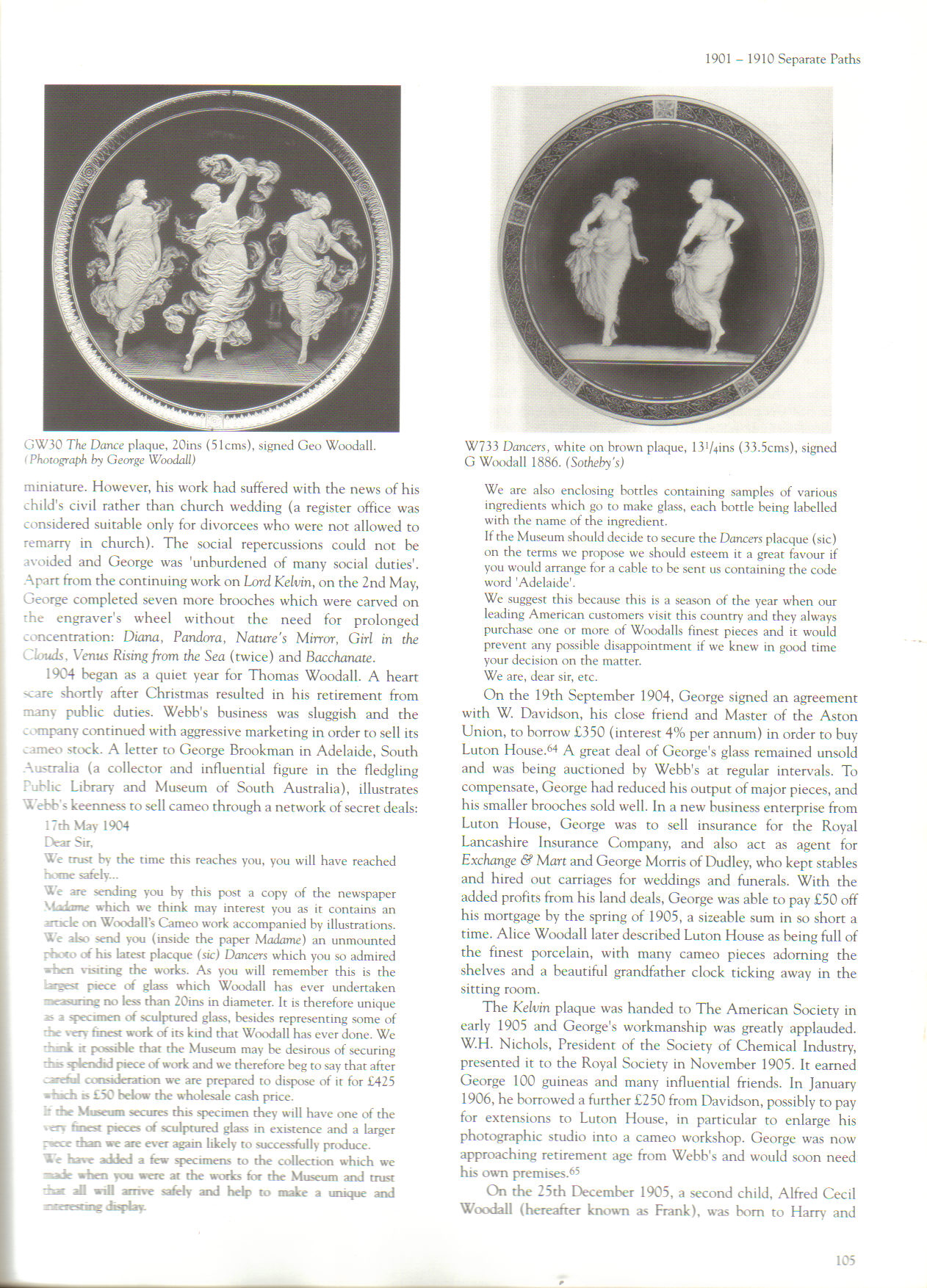The Dancers, An Overlaid and Wheel-Carved Glass Charger
By George Woodall for Thomas Webb & Sons, 1886
Engraved G. Woodall, 1886 and Thos.Webb & Sons
13 ¼ in (33.7 cm) diameter
Provenance
The collection of Jim Frambers, Kansas City
Private Collection, St Louis, Missouri
cf. Christopher Woodall Perry, The Cameo Glass of Thomas and George Woodall, 2000, p.105
13 ¼ in (33.7 cm) diameter
Provenance
The collection of Jim Frambers, Kansas City
Private Collection, St Louis, Missouri
cf. Christopher Woodall Perry, The Cameo Glass of Thomas and George Woodall, 2000, p.105
'The Dancers' is an extraordinary plaque, the richness of the figurative decoration and the movement of the two female figures showing a freedom which can only be captured by an artist of quality. Fine Victorian classical paintings of the time – the work of Alma Tadema, Albert Moore and others – demonstrate this liveliness allied to the mystique of classicism. Neo-classical art was adored by the Victorians, the decorative scenes reproduced echoing the wealth and carefree attitude of the Greek and Roman Empires which the newly endowed entrepreneurs of 19th-century society desired to emulate.
The rich plum ground colour of this piece, and the varying depths of the white glass overlay, suggest the many hours George Woodall laboured unaided to create such a masterpiece. It relies solely on the varying depths of carving the layers of opaque white glass to provide the dramatic climax. It has become apparent that George Woodall reserved darker ground colours, including this unusual plum colour, for pieces which were intended for exhibition. The Great Tazza, now in the Corning Museum of Glass, was produced by the Woodall workshop for the Exposition Universelle in Paris in 1889.
Amongst the leading cameo artists in England at this time, George and Thomas Woodall, who worked for Thomas Webb & Sons, are outstanding. The rich diversity of their styles – derived mostly from classical mythology, Islamic art and nature – marks them out as possibly the finest cameo decorators of all time. Although they worked together as a team, George Woodall is perhaps the better known of the two brothers. His career took off in 1886 when they agreed that George would be free to work uninterrupted on solo pieces. One of the first significant pieces George engraved as a solo artist was the plaque, The Dancers, which dates from the beginning of that year and is signed by him alone. Coincidentally, this was one of the first plaques entered in the Webb's Price Book where much of the evidence of Woodall's work is preserved.
Other plaques and vases engraved with a variety of scenes from classical mythology and signed specifically by George Woodall may be found in museums around the world. However, it is rare pieces such as The Dancers, with their extraordinarily evocative expression of movement, which mark George Woodall out as perhaps the greatest cameo glass engraver since the artist who produced the Portland Vase two millenia ago.
The rich plum ground colour of this piece, and the varying depths of the white glass overlay, suggest the many hours George Woodall laboured unaided to create such a masterpiece. It relies solely on the varying depths of carving the layers of opaque white glass to provide the dramatic climax. It has become apparent that George Woodall reserved darker ground colours, including this unusual plum colour, for pieces which were intended for exhibition. The Great Tazza, now in the Corning Museum of Glass, was produced by the Woodall workshop for the Exposition Universelle in Paris in 1889.
Amongst the leading cameo artists in England at this time, George and Thomas Woodall, who worked for Thomas Webb & Sons, are outstanding. The rich diversity of their styles – derived mostly from classical mythology, Islamic art and nature – marks them out as possibly the finest cameo decorators of all time. Although they worked together as a team, George Woodall is perhaps the better known of the two brothers. His career took off in 1886 when they agreed that George would be free to work uninterrupted on solo pieces. One of the first significant pieces George engraved as a solo artist was the plaque, The Dancers, which dates from the beginning of that year and is signed by him alone. Coincidentally, this was one of the first plaques entered in the Webb's Price Book where much of the evidence of Woodall's work is preserved.
Other plaques and vases engraved with a variety of scenes from classical mythology and signed specifically by George Woodall may be found in museums around the world. However, it is rare pieces such as The Dancers, with their extraordinarily evocative expression of movement, which mark George Woodall out as perhaps the greatest cameo glass engraver since the artist who produced the Portland Vase two millenia ago.






















